Finding out one of the plants in your garden is unwell can be devastating. Do you have a Japanese maple tree that is dying and don't know how to stop it? What causes this type of maple tree to die? Luckily, we've done extensive research into these questions and have the answers for you below.
In general, the main reason a Japanese maple tree will start to die is because of a fungal disease. Your tree can become more susceptible to this if its soil is too wet, so make sure not to overwater your Japanese maple.
Furthermore, your tree will start to turn brown and look like it's dying if you forget to water it. Considering that Japanese maples aren't heat tolerant, an especially dry, hot summer can negatively impact your plant.
As we begin, we will cover all things Japanese maple trees and discuss why yours may be dying. Whether this is your first time experiencing issues or you deal with them regularly, we're here to help. With that said, let's dive right into this article!
![Red maple at Imperial palace park, Why Is My Japanese Maple Dying? [And How To Save It]](https://gardentabs.com/wp-content/uploads/2022/06/Why-Is-My-Japanese-Maple-Dying-And-How-To-Save-It.jpg)
What Causes Japanese Maple To Die?
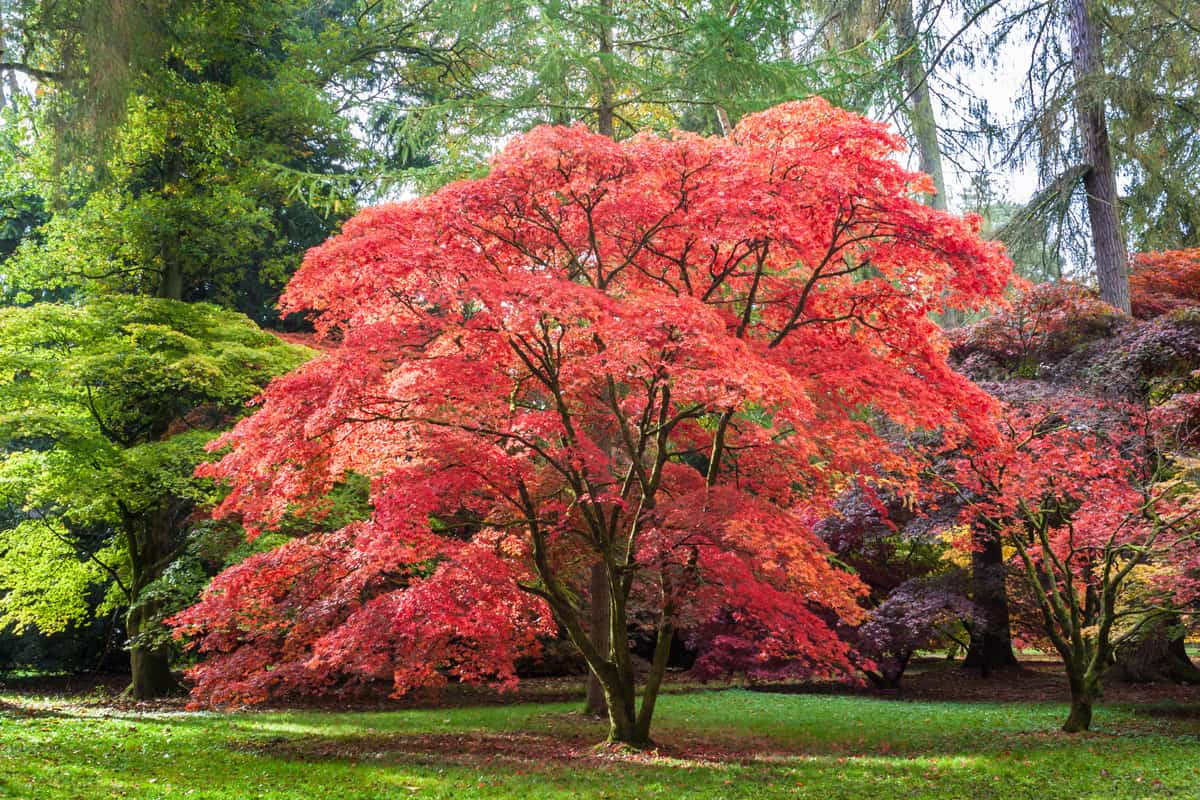
For those with a sick Japanese maple, one of the first places you'll want to check is your tree's soil. Typically, when a Japanese maple tree sits in water for too long, this opens the door for fungal diseases.
Like many trees, Japanese maples don't like saturated roots and can begin to drown if too much water is in the ground. Fungal diseases thrive in wet ecosystems, so always check the soil before adding more water.
In addition, if your maple is in full sun and you forget to give it water, this can also cause death. Ideally, you want to keep your Japanese maple watered through the warmer spring/summer months to avoid discoloration and leaf burning.
Garden Report also mentions how Japanese maples may look like they're dying if there are high winds, so these trees can be somewhat sensitive.
If you recently planted your maple, it could also be in shock, which should subside after a week or so in the ground. Again, every plant is different, so these environmental conditions will affect them in various ways.
What Does A Dying Japanese Maple Look Like?
If you can't tell whether your Japanese maple is dying or not, take a look at its leaves. A sickly maple will generally have discolored foliage, often turning brown and looking burnt.
In addition to the leaves turning brown, your tree will also lose significant amounts of foliage. You can typically notice this start towards the bottom of your maple, eventually reaching the top.
You can also see branches of your tree start to become brittle and break off easily. Luckily, if you catch these warning signs early on, you should be able to save your Japanese maple.
The first symptom of an unhealthy maple is yellowing leaves, so keep an eye out for that on your tree.
How Do You Save A Dying Japanese Maple Tree?
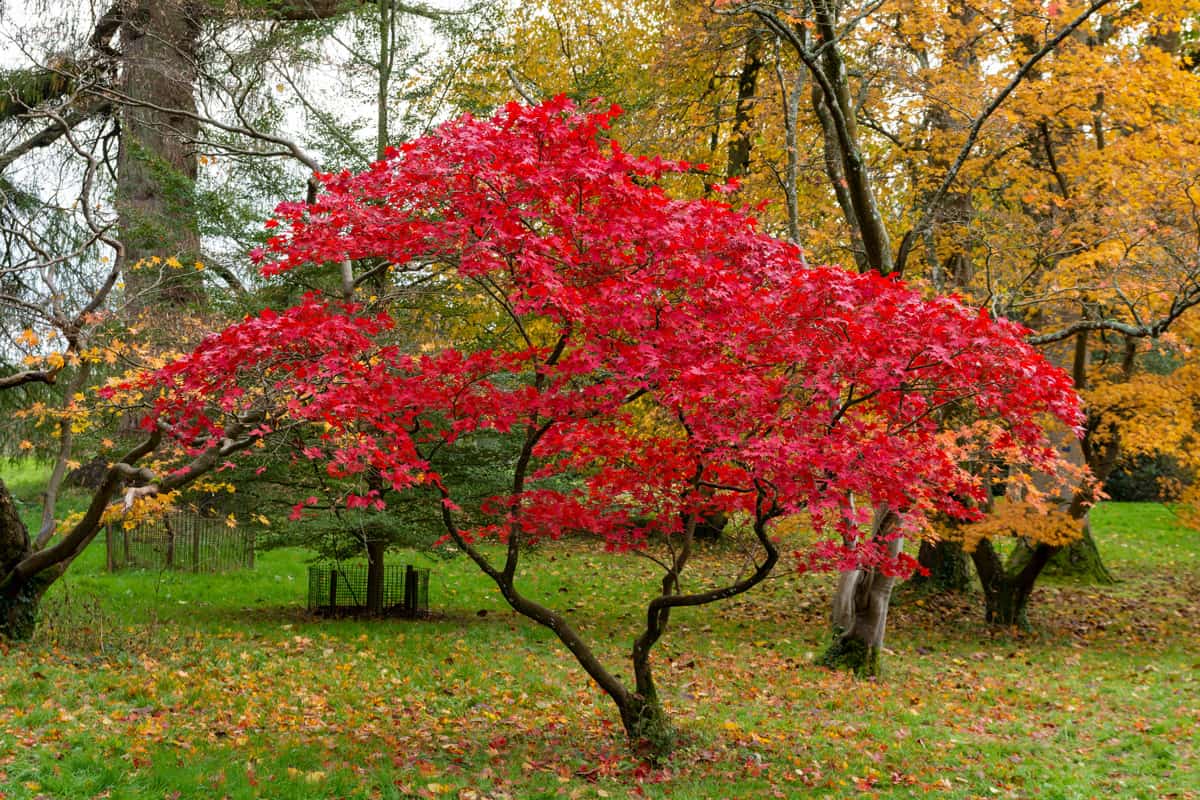
Now that you know the warning signs of dying Japanese maples, it's time to work. The first step here is to check the ground beneath your maple tree.
If it feels super wet and soggy, stop watering your tree until further notice. In contrast, if the ground surrounding your maple is dry, you should give your tree a thorough watering.
As we mentioned, a wet environment is perfect for fungal diseases to develop and spread. If you continue to overwater a Japanese maple, you are essentially opening the door for these to develop in your tree.
Furthermore, you want to ensure your maple isn't getting too much or too little sun. Even though this tree variety prefers a sunny location, if you're somewhere extremely hot, you might want to consider moving your Japanese maple to a partially shaded spot.
Wind can also make a Japanese maple appear dead, but this is more cosmetic.
On top of taking these steps, we also recommend pruning the dead sections of your tree. Although a Japanese maple doesn't usually need much trimming, it can be helpful to do this in times of emergency.
Getting rid of those infected/affected branches can save energy your tree needs to focus on the healthier, alive sections.
Can You Always Revive A Dying Japanese Maple?
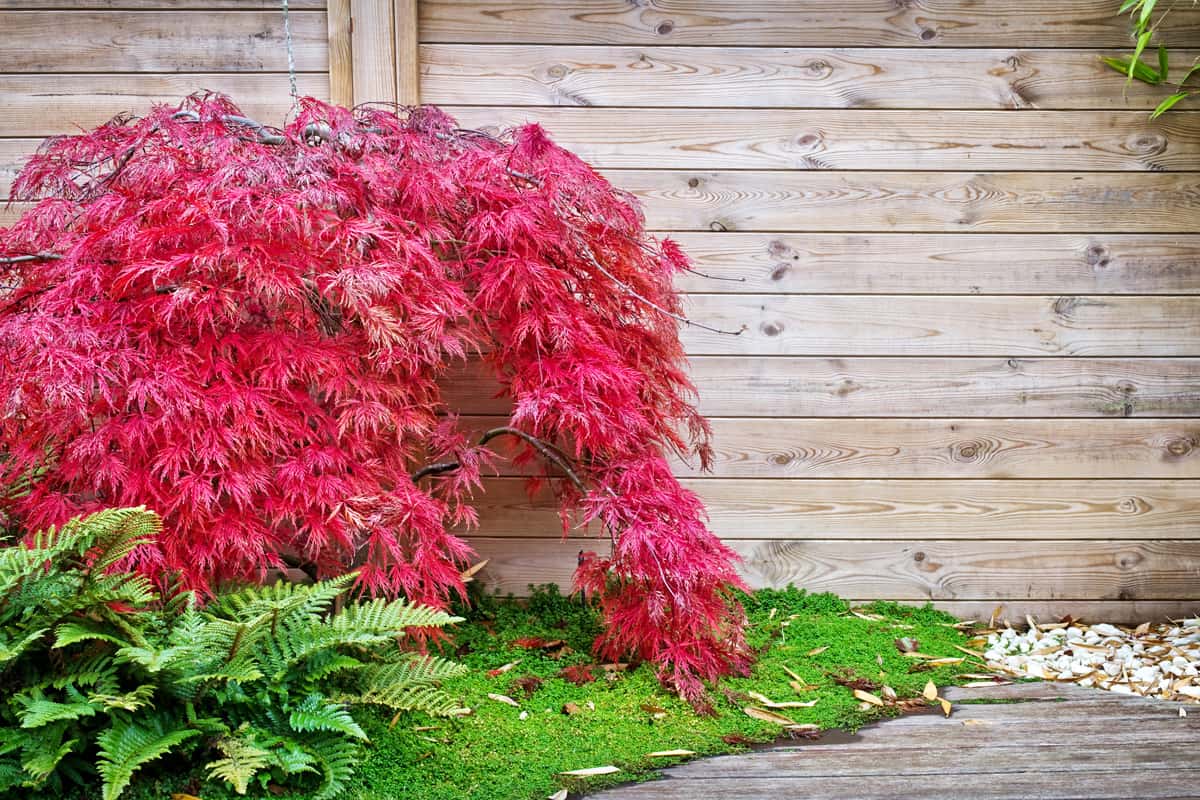
Unfortunately, reviving a dying Japanese maple tree is not always possible. In general, if your maple is already 50% dead, it's too late to save it.
As we covered above, there are early warning signs that you need to take seriously for this species. If you notice yellowing or browning leaves, that is when you need to take swift action to protect your maple.
If you wait until there are dead sections of your tree, the disease may be too far gone to stop.
Again, every Japanese maple is different, so the dying process isn't always the same speed. For example, if you continue watering an already saturated maple, you could kill it within a few weeks.
For that reason, it's imperative to feel around the base of your tree before watering. Additionally, it can be good to fertilize a Japanese maple every year, which may help strengthen it against potential diseases.
Regardless, you want to ensure your tree has enough water, sunlight, and nutrient-rich soil.
Can A Japanese Maple Recover From Root Rot?
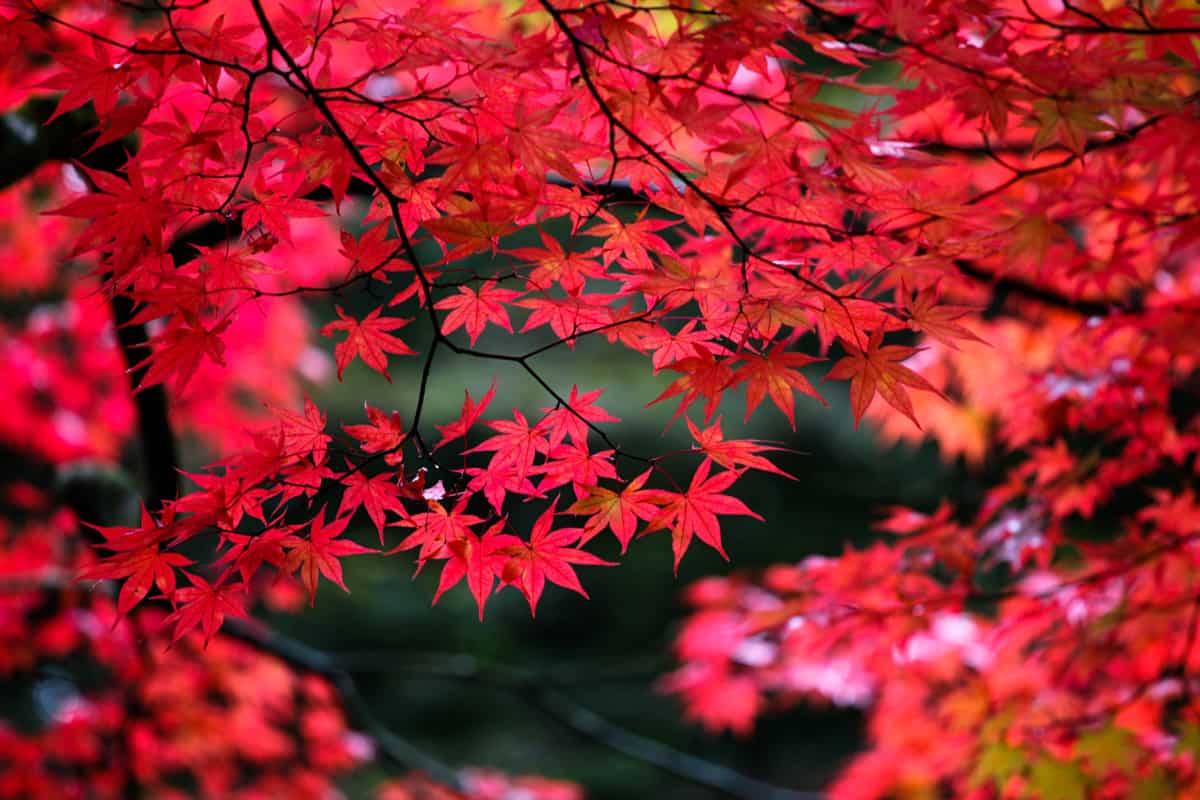
Root rot can be a serious issue for those who went too crazy with the watering. Luckily, it should pull through if your maple is healthy before the overwatering happens.
With that said, you will need to improve the drainage of your tree's soil ASAP. The key to saving your tree here is getting the excess water moving away from the root system.
We recommend adding sand, gravel, leaves, and other natural elements near the base of your maple. These additional items can help absorb excess moisture and move it through the soil.
Of course, you will need to dig to mix the sand/gravel/etc with the existing soggy ground, so this is easier said than done.
It's also best to avoid watering or fertilizing a Japanese maple with root rot. During this period, your tree is more susceptible to disease and death, so the less you do to it, the better.
Moreover, you can try pruning any dead areas of your tree as the ground begins to dry, which can help it conserve much-needed energy for healthy, live sections.
How Much Sun Does A Japanese Maple Need?
Planning is essential because planting your Japanese maple in a bright enough spot is the easiest way to prevent root rot.
According to This Old House, a Japanese maple should get at least four hours of direct sunlight daily.
However, a Japanese maple tree can also thrive in full sun or closer to six hours of direct exposure. Again, this can vary depending on where you live and how hot it gets, so consider that before choosing a location.
This tree species, specifically, can be sensitive, so moderation is key. Even though the sun will keep the soil beneath your maple dry, too much can burn it.
The same goes for too much shade. If there's not enough sunlight shining down onto your maple, expect an increased chance of disease.
How Long Do Japanese Maples Live?
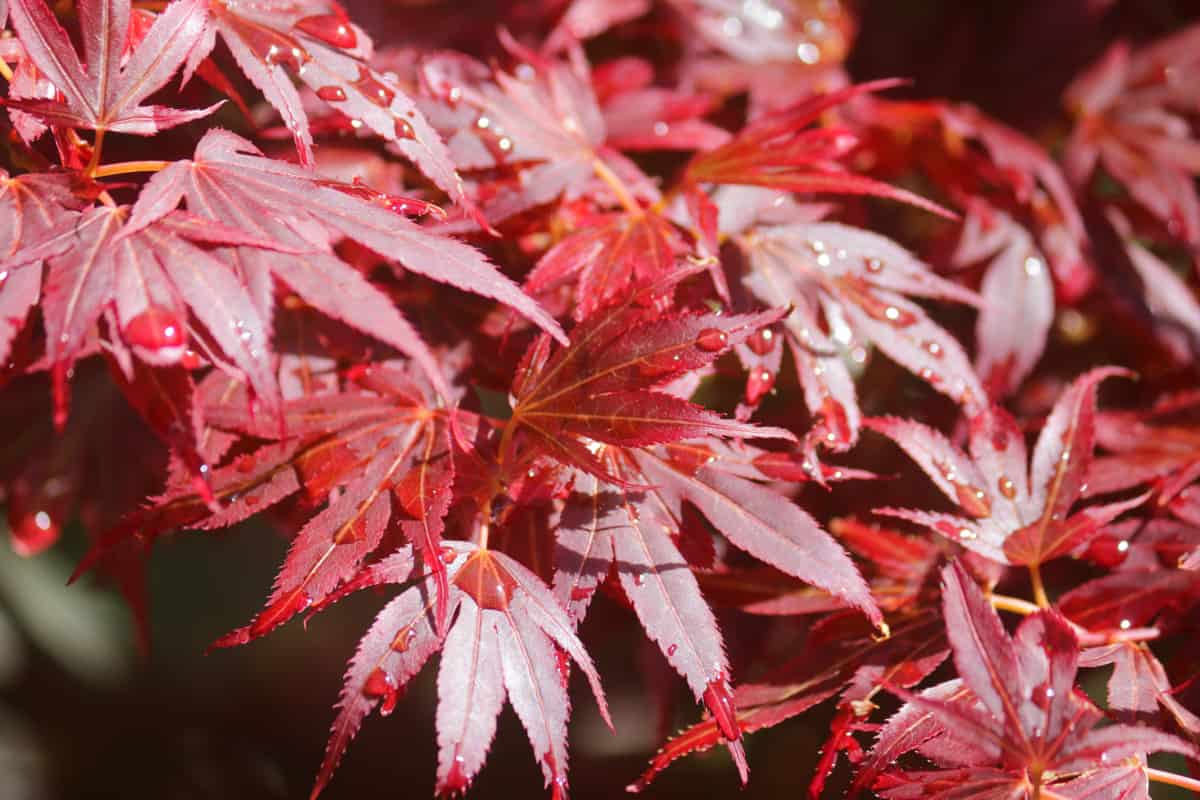
You can generally expect a Japanese maple tree to live upwards of 100 years. Depending on how well you take care of them, this maple variety can live for generations.
On the other hand, Japanese maples can also have relatively short lifespans if you overwater them. Additionally, your maple may not age well if you don't give it enough sunshine.
As we mentioned, this is a tree of moderation, so the more routinely you care for one, the longer it will survive. The location of your Japanese maple can also affect its lifespan, so if you're somewhere urban, expect less than 100 years.
Unfortunately, that is the case for many plants growing in cities, as the air quality is not as good.
How Fast Do Japanese Maple Trees Grow?
Typically, a Japanese maple will be a slow to moderate grower. Like many maple varieties, Japanese trees won't usually see more than 12-24 inches of growth per year.
For that reason, it can take decades for your tree to reach its full size. Of course, you may have more luck depending on the climate and how well you maintain your plant, so that's not to say everyone will have the same slow growth.
On top of that, regularly fertilizing a Japanese maple can be beneficial. Ideally, you want to do this in the spring or summer to promote as much growth before the temperatures fall.
According to Garden Design, your maple will likely take upwards of ten years to reach 7 to 12 feet by 4 to 8 feet, so this is a waiting game.
Moreover, if you have your tree in a container, it will take roughly ten years to reach 6 feet by 4 feet.
To Finish Things Up
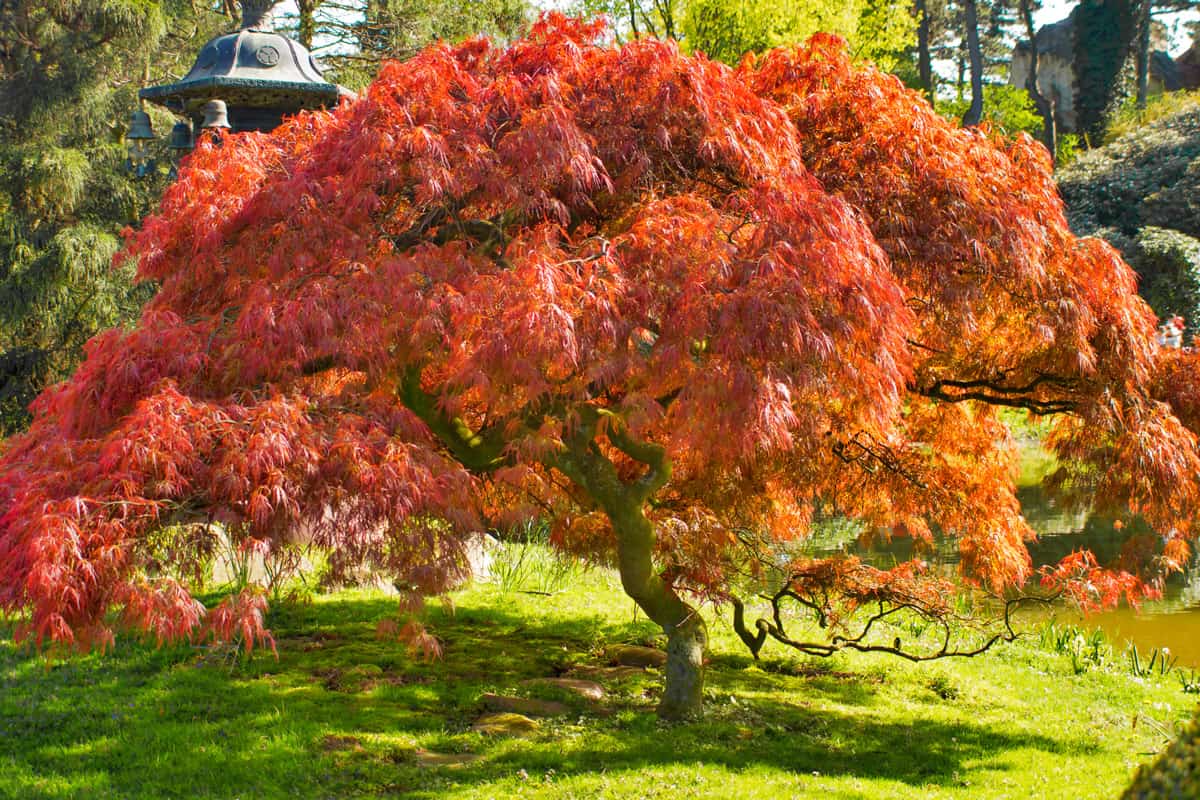
Whether you have a Japanese maple tree growing in your garden or want to plant one, it's always good to know how to maintain one properly. From what we found, a Japanese maple will die for various reasons.
You can commonly expect an overwatered maple to develop root rot or a fungal disease. Furthermore, a Japanese maple could die because of drought or a lack of routine watering/maintenance, so this happens for both sides of that spectrum.
Regardless, acting fast is best if you notice discoloring leaves. We recommend planting your Japanese maple in a sunny location to prevent waterlogging, root rot, and other diseases.
Do Japanese Maple Trees Lose Their Leaves?
Best Fertilizers For Maple Trees - 4 Different Types To Consider
